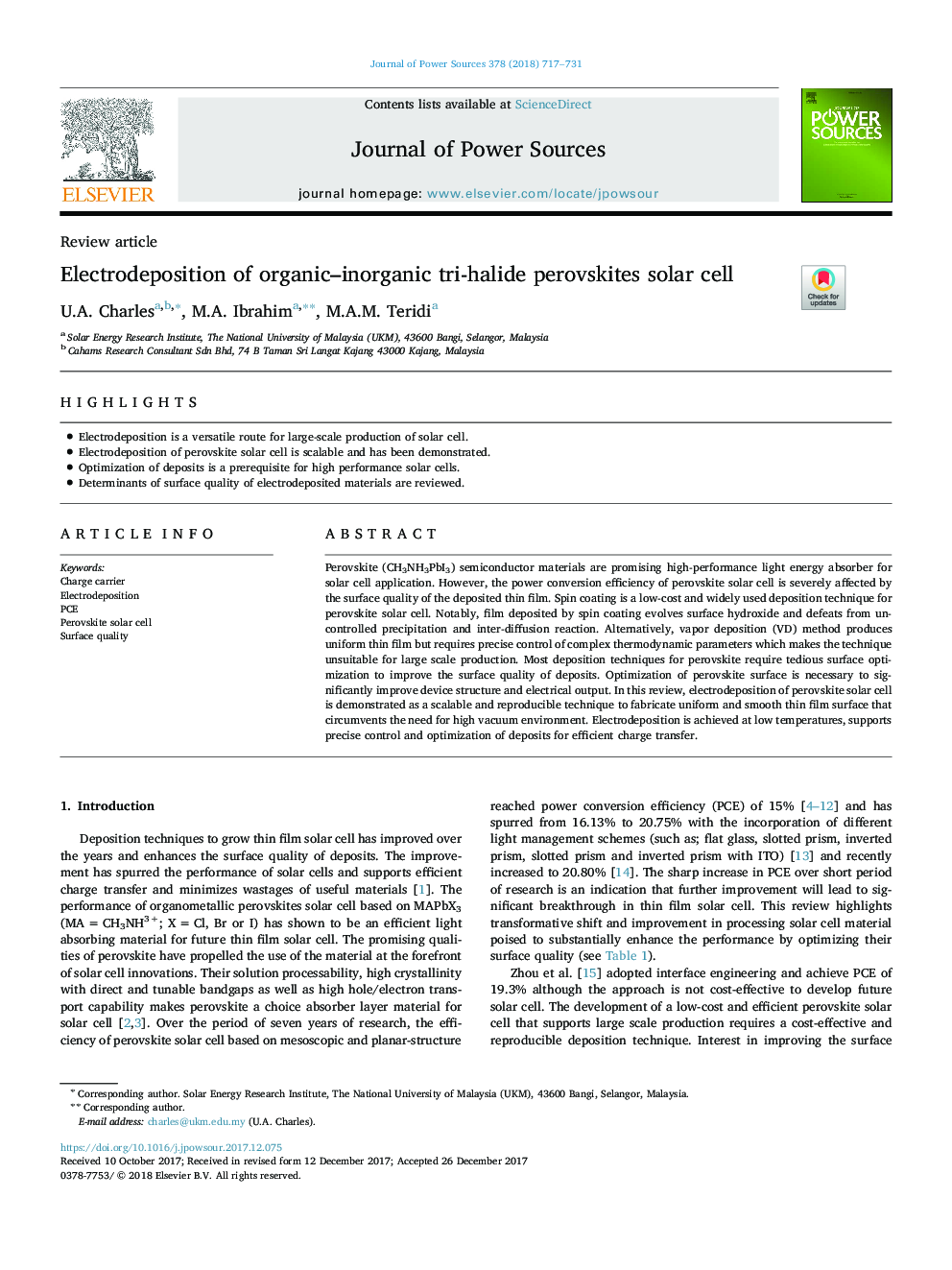| Article ID | Journal | Published Year | Pages | File Type |
|---|---|---|---|---|
| 7726236 | Journal of Power Sources | 2018 | 15 Pages |
Abstract
Perovskite (CH3NH3PbI3) semiconductor materials are promising high-performance light energy absorber for solar cell application. However, the power conversion efficiency of perovskite solar cell is severely affected by the surface quality of the deposited thin film. Spin coating is a low-cost and widely used deposition technique for perovskite solar cell. Notably, film deposited by spin coating evolves surface hydroxide and defeats from uncontrolled precipitation and inter-diffusion reaction. Alternatively, vapor deposition (VD) method produces uniform thin film but requires precise control of complex thermodynamic parameters which makes the technique unsuitable for large scale production. Most deposition techniques for perovskite require tedious surface optimization to improve the surface quality of deposits. Optimization of perovskite surface is necessary to significantly improve device structure and electrical output. In this review, electrodeposition of perovskite solar cell is demonstrated as a scalable and reproducible technique to fabricate uniform and smooth thin film surface that circumvents the need for high vacuum environment. Electrodeposition is achieved at low temperatures, supports precise control and optimization of deposits for efficient charge transfer.
Related Topics
Physical Sciences and Engineering
Chemistry
Electrochemistry
Authors
U.A. Charles, M.A. Ibrahim, M.A.M. Teridi,
